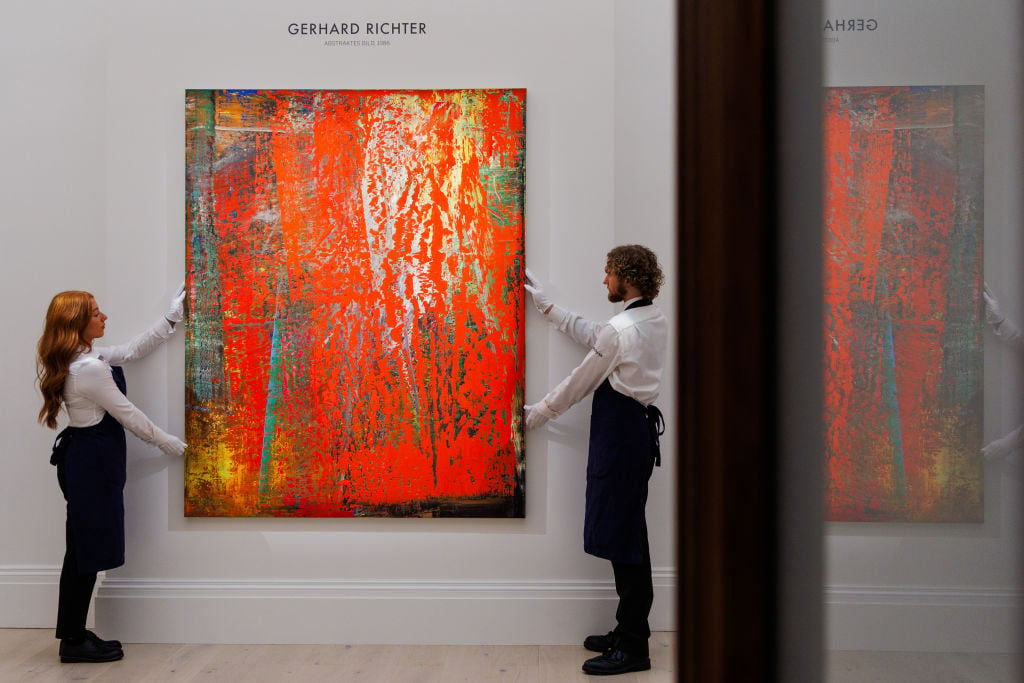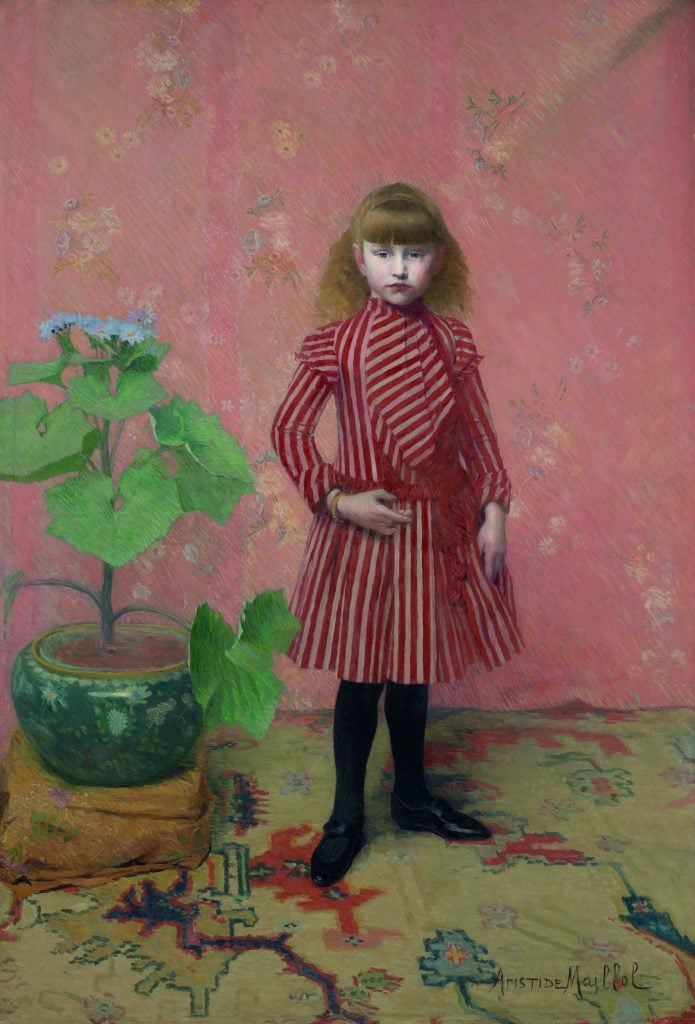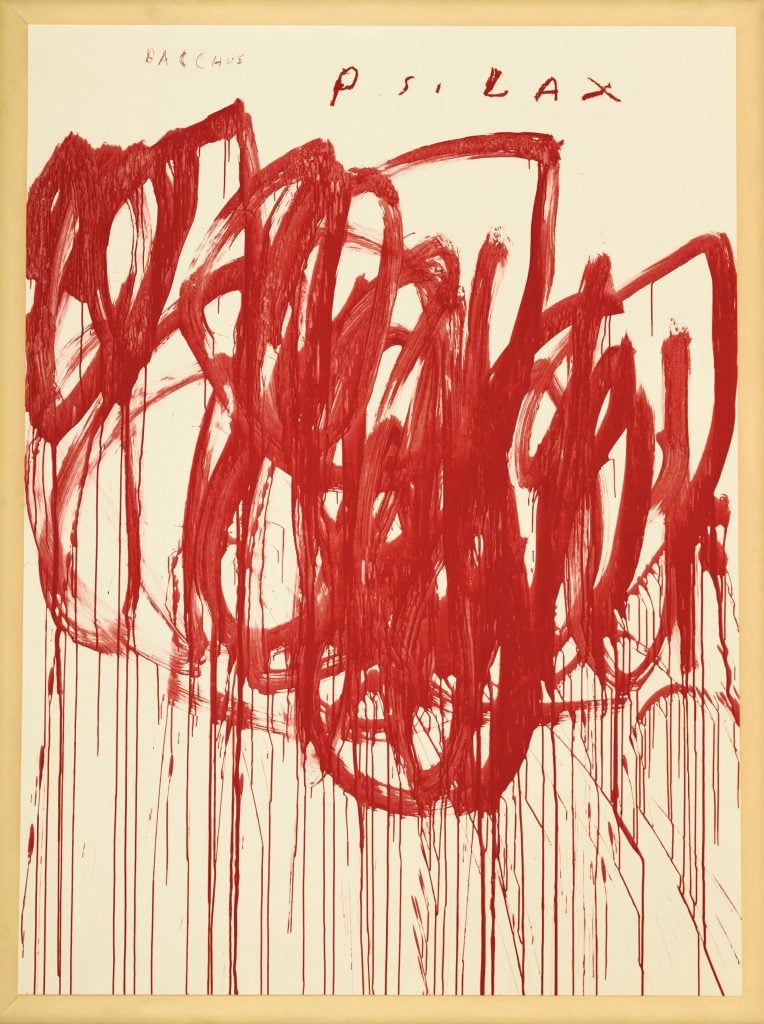The Back Room
The Back Room: London Falling?
London’s sluggish sales get a jolt, Paris+ primed to become a French fixture, a little-seen Cy Twombly heads to Christie’s, and more.

London’s sluggish sales get a jolt, Paris+ primed to become a French fixture, a little-seen Cy Twombly heads to Christie’s, and more.

Artnet News

Every Friday, Artnet News Pro members get exclusive access to the Back Room, our lively recap funneling only the week’s must-know intel into a nimble read you’ll actually enjoy.
This week in the Back Room: London’s sluggish sales get a Josefowitz jolt, Paris+ primed to become a French fixture, a little-seen Cy Twombly heads to Christie’s, and much more—all in a 6-minute read (1,687 words).
CORRECTION: A previous version of this article compared Sotheby’s and Christie’s $111.4 million hammer total over the autumn evening sales in 2023 with the $355.7 million achieved in 2017, but failed to note that the 2017 figure included auction house fees as well as the total from Phillips and the relevant day sales. The article has been amended.

Aristide Maillol, Portrait de Mademoiselle Jeanne Faraill (1888-1889). Courtesy of Christie’s Images, Ltd.
Tensions have been simmering in the art market since the summer as reports of gallery closures, underwhelming fair results, and global economic downturn continue. Many have been anxious to see if the “market correction” (read: contraction) would persist, as the art world congregated in Europe, first for Frieze London last week and now for Art Basel’s Paris+. Given the U.K.’s ongoing embattled economic position—spurred by a noxious blend of Brexit, the pandemic, a falling pound sterling, and some of the highest inflation rates in the Western world—some have surmised that Paris could be poised to become the new market capital of Europe, especially with the influx of major international dealers and an Art Basel event over the last few years.
As the dust of the back-to-back fairs and London’s autumn auction season settles, it seems that the market has plateaued at a place called “soft,” where sales haven’t stopped—nor have they impressed—in either city.
The most transparent evidence we have of this comes from London’s fall sales, which were patchy at best. Between the three major auction houses—Sotheby’s, Christie’s and Phillips—we saw a net total of $222 million over the evening sales (all prices adjusted from pounds and including buyer’s premiums). All in all, the auction houses were about on par with each other in terms of totals. At Sotheby’s, The Now sale brought in $19.9 million while their main contemporary sale yielded $37 million; Christie’s brought in $54.5 million from their 20th and 21st century evening sale.
The softening market could be seen in several key transactions—or lack thereof—at both major houses. Without question, the biggest blip of the week was Gerhard Richter’s 1986 red Abstraktes Bild, which had the highest estimate ($19 million- $29 million) of Sotheby’s evening sale and went unsold when bidding stalled at $17.5 million. Indeed, before the sale started, several lots were withdrawn due to lack of interest, among them works by typical auction “safe bets” like Peter Doig, Mark Grotjahn, Christopher Wool, and Jeff Koons. Perhaps the surprise unsold lot of the evening at Christie’s was Maria Berrio’s The Procession (2015), which had a high estimate £700,000—the highest price range yet seen for her work.
Christie’s, however, scored a major leg-up this season, clinching the single-owner sale of the eclectic Sam Josefowitz collection, which accounted for $63.2 million of Christies’ net earnings from this season, topping off the house’s net sales for fall to $117.7 million. This was a serious victory for the house, considering that single-owner collections tend to find themselves in the New York sales.
The Josefowitz sale, which spanned genres from late-19th-century symbolism to Diego Giacometti furniture and prints, was led by a portrait by Aristide Maillol titled Portrait de Mademoiselle Jeanne Faraill (1888–1889), which surpassed its estimate when it sold for $2.9 million. Many works in the collection went for over their estimates, which was rare this season. For instance, Colin Gleadell‘s auction coverage notes that at Sotheby’s contemporary sale, over half of the works sold for their lower estimate or below.
As Gleadell shrewdly points out in his write-up of the Josefowitz sale, the final leg of the $98 million collection was divided up for auction in both London and Paris (where the sale continues today), but the highest-valued lots were sold in London. Moreover, the London portion of the sale gave Christie’s the oomph it needed to surpass its competitor for the highest earnings from this season’s Frieze week events.
The Josefowitz sale’s success in London suggests that the U.K. capital remains in the driver’s seat of the European art market even as Paris pushes on the gas. While the sale boosted Christie’s total net earnings to $174.6 million, far outstripping Sotheby’s contemporary sales, these sums are hardly enough to fuel the U.K. market back up to top strength where it had been in 2017, when the London autumn auctions peaked at $355.7 million across all sales for the week.
Here’s what made a mark around the industry since last Friday morning…
Art Fairs
Auction Houses
Galleries
Institutions
Tech and Legal News
“[Art] does not have any of the characteristics of good investments—it’s not liquid, the pricing process is not clear and obvious. When you buy an artwork, you are never sure that it’s not a fake copy, particularly when you are speaking about very old masters. It’s absolutely not a good investment. It’s not producing yield. We do not invest in art—ever.”
—Philippe Gaboriau, executive director of the Louvre Endowment Fund, to the Financial Times

Cy Twombly’s Untitled (Bacchus 1st Version II) (2004). Courtesy of Christie’s Images, Ltd.
Date: 2004
Seller: Ramiro and Gabriela Garza
Estimate: $18 million to $25 million
Selling at: Christie’s New York
Sale date: November 7, 2023
Measuring almost 9-feet-tall and 6.5-feet-wide, the canvas depicts an amalgam of Twombly’s red, bleeding loops, crowned with the word “Psilax,” which Christie’s translated as “the Giver of Wings,” one of the attributes of Bacchus, the Greek god of wine.
The painting is part of Twombly’s Bacchus series, created between 2003 and 2008. Untitled (Bacchus 1st Version II) was completed early on and seems almost like a sketch or a study in oil on a huge scale. While other works from this period had been shown together in the “Bacchus: Psilax and Mainomenos” exhibition at Gagosian in 2005, Untitled (Bacchus 1st Version II) was not shown until 2008 at the Red October Chocolate Factory in Moscow, just after the collapse of Lehman Brothers. At the time, it was priced around $3 million to $3.5 million and did not find a buyer.
The Garzas, who spend their time between Mexico City and Aspen, bought the work in 2010. The collectors are selling it anonymously as part of a bigger consignment described as “The Elegant Eye: Works from an Exceptional International Collection” by Christie’s.
The top price for a Bacchus work belongs to the 16-foot-wide, 2005 painting that fetched $46 million at Christie’s in 2017, according to the Artnet Price Database. Last year, a similarly monumental canvas went for $41.6 million at Phillips.
— Katya Kazakina